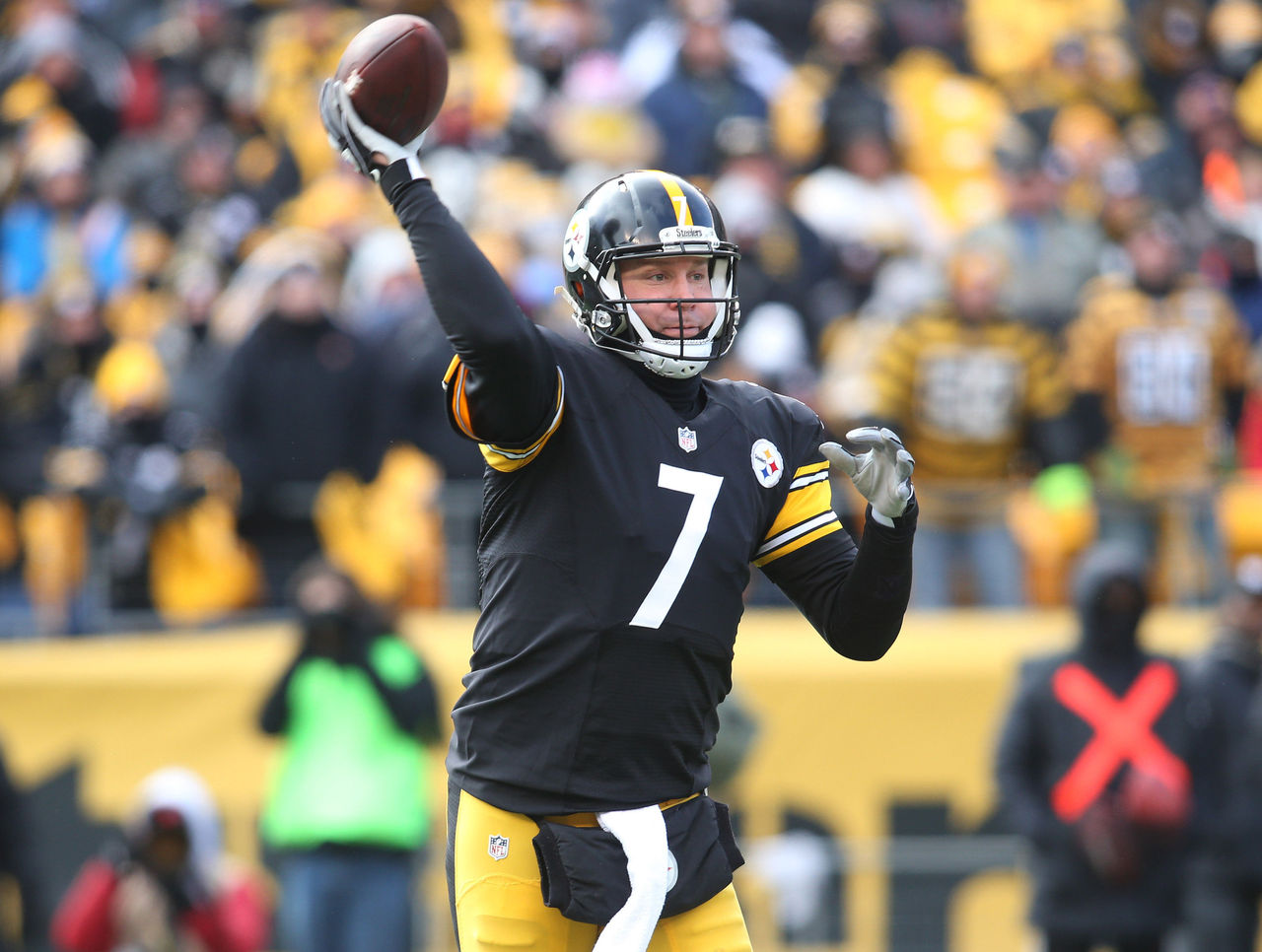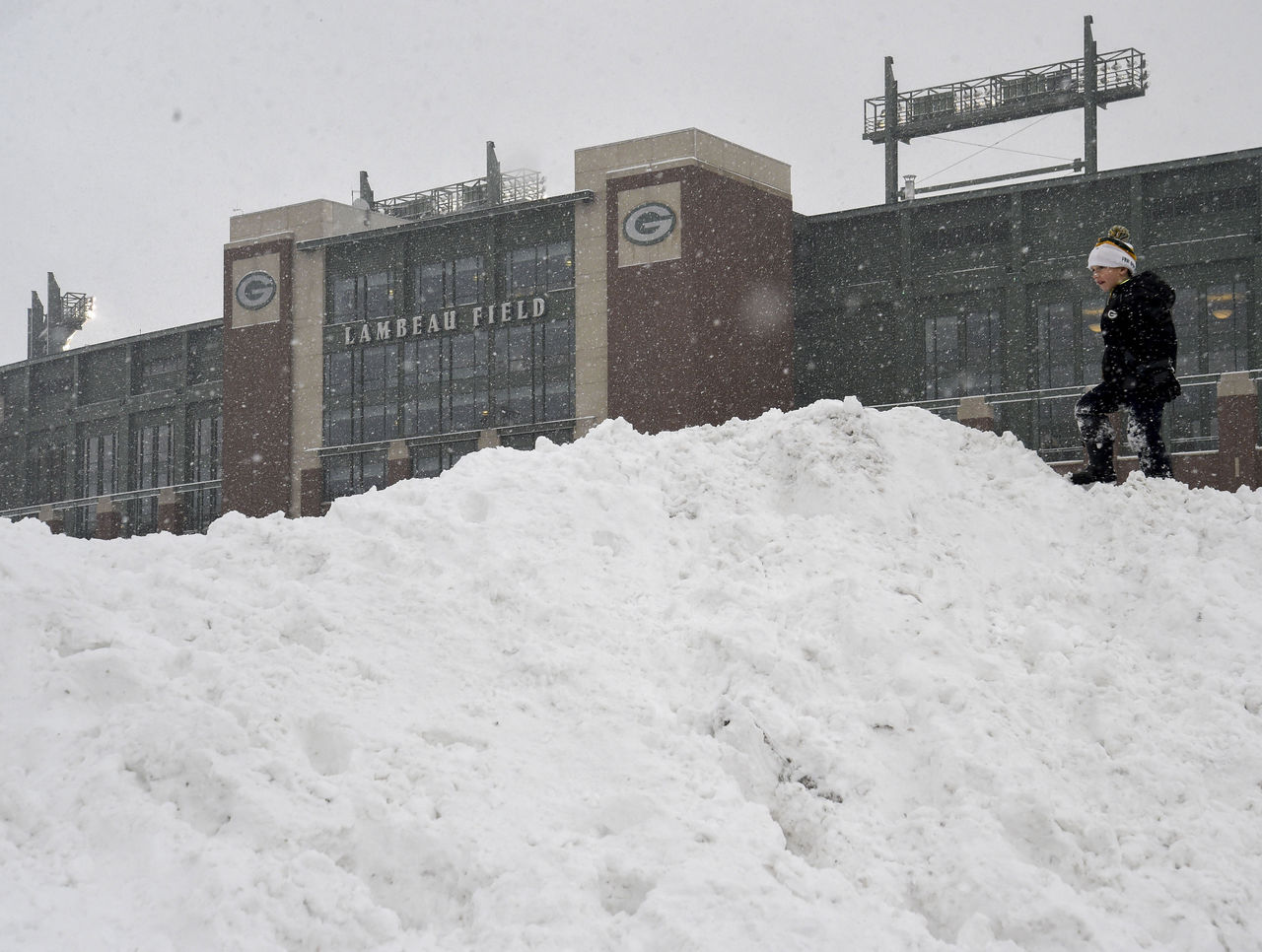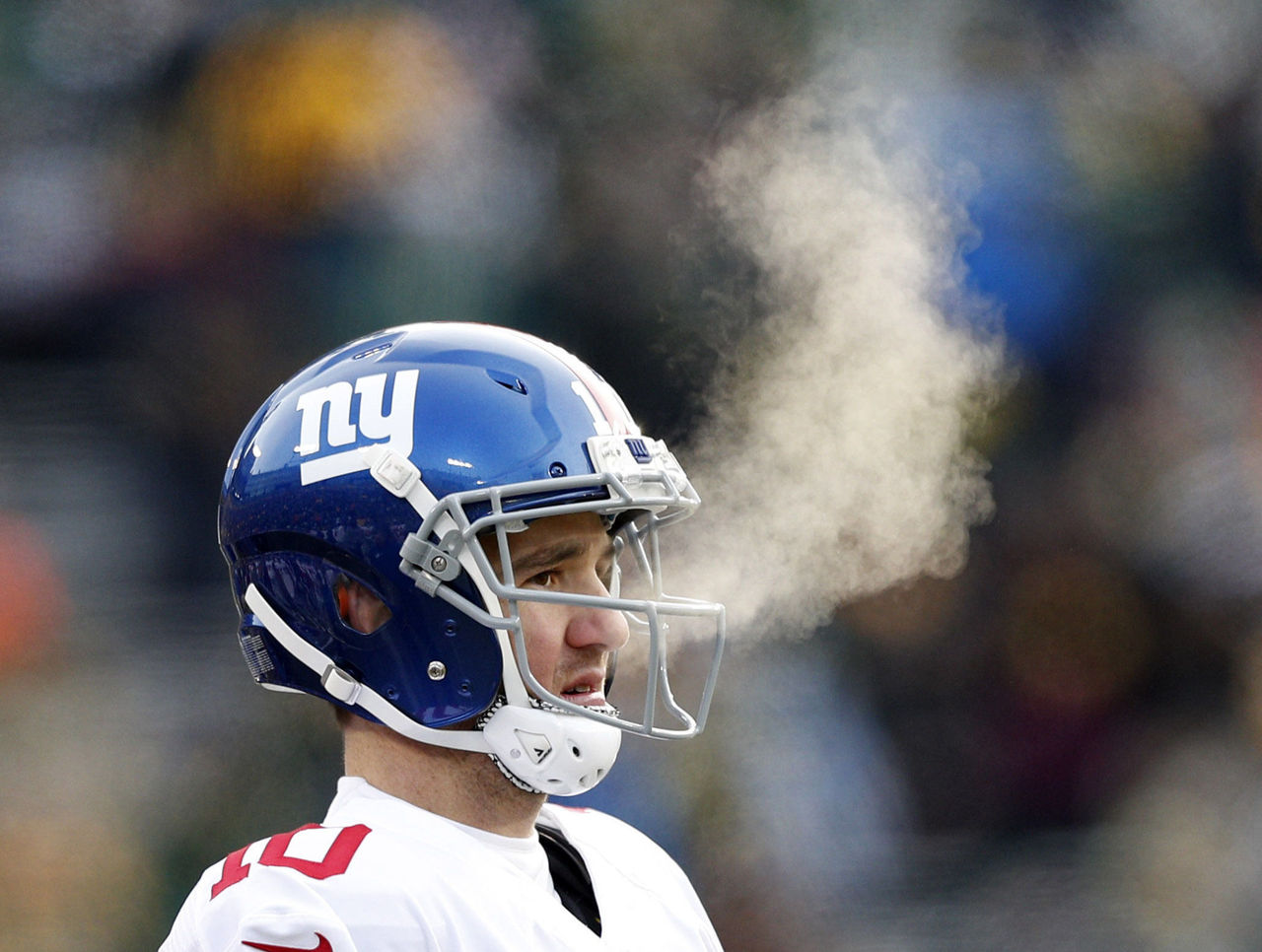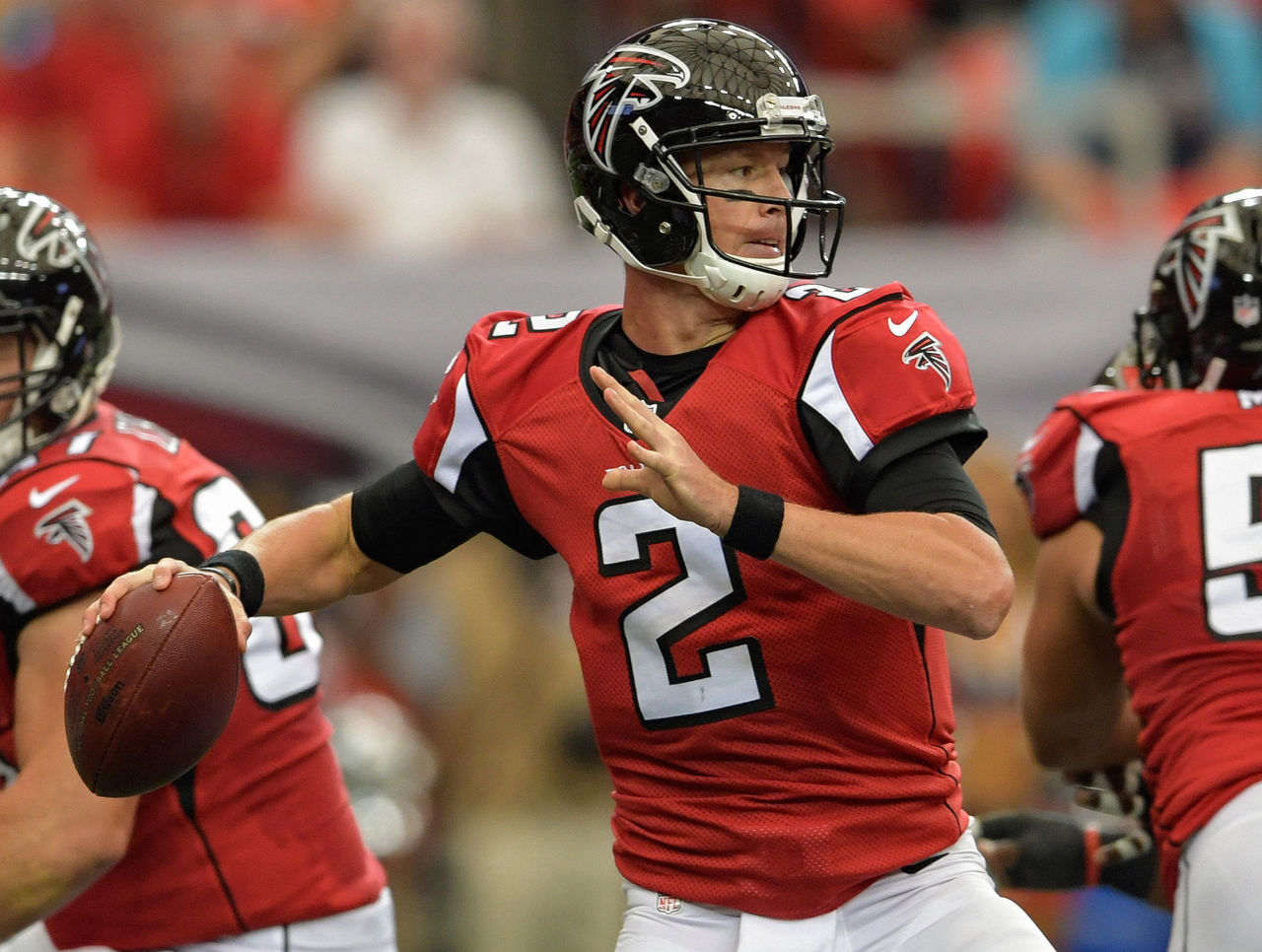Rosenfels explains why some QBs excel playing in the 'slop'
Sage Rosenfels is a former 12-year NFL quarterback who writes, does radio, and podcasts about the NFL and college football.
In the NFL, no two quarterbacks are created equal.
This past weekend, we saw a variety of quarterback play, each under unique conditions. In Houston, the Texans beat the Raiders under the roof at NRG Stadium. Seattle hosted the Lions on Saturday, meanwhile, and while the footing was the same (field turf), the temperature was a chilly 35 degrees.
On Sunday, we saw a much different story. Both the Packers and Steelers hosted playoff games in frigid temperatures and on sloppy/frozen fields. It’s not easy to play in those conditions, but for the most part all four quarterbacks threw the ball well. Three of them - Rodgers, Roethlisberger, and Manning - have a long history of phenomenal play in bad-weather games. Add Tom Brady, who had a bye this past weekend, and these playoffs will feature some of the NFL’s all-time greatest "slop" quarterbacks.
Every quarterback studies other quarterbacks. We compare their pre-snap stance to our own. We analyze their drops and footwork. Quarterbacks are always looking for the quickest, most efficient, and most effective way to play the position. As you study other quarterbacks, you occasionally make small adjustments in your own motion to see if the changes help your accuracy or arm strength.
A quarterback’s throwing motion is similar to a golf swing, in that even though certain fundamentals maximize the velocity and accuracy of both hitting and throwing a ball, no two motions are the same. As much as quarterback gurus and golf coaches attempt to perfect them, every athlete has a unique body which necessitates a unique motion.

As you watch quarterbacks each week, you'll notice that the football comes out of the hand differently with each thrower. Peyton Manning’s spiral is very different than Aaron Rodgers’. Drew Brees’ passes aren’t as pretty as Cam Newton’s. Some of this has to do with natural differences in body type, such as arm length and hand size. Other differences depend on how quarterbacks have been taught (or self-taught) to throw a ball. Because of these variances, some players are better equipped to throw in bad conditions.
To be a great quarterback, it helps to throw a good spiral - a tight one with lots of spin cuts through wind better than a wobbling pass. However, as we've seen with players such as Peyton Manning, it's still possible to be a great player without mastering the art. Of course, playing most of his career in the AFC South - which featured his Colts (dome) and Houston (dome), along with Jacksonville and Tennessee - gave Manning some of the league's most favorable throwing conditions. Compare that with the NFC/AFC East divisions, where the majority of games are played outside in the cold. Peyton would NOT have enjoyed the same passing success if he played 10 games a year in Buffalo, New Jersey, and Foxboro. I don’t believe I’m going out on a limb when I say that Peyton Manning wasn’t a great "slop" quarterback.
Personally, I struggled to throw in adverse conditions. Excessive wind, rain, or cold significantly affected my passing ability. I didn’t always throw a perfect spiral, my arm wasn’t particularly strong, and I wasn’t a powerful athlete when compared to other NFL quarterbacks. Bad weather was my worst nightmare. It’s not a surprise that my best NFL seasons were played in Miami and Houston. As a backup, whenever we played in Buffalo or Green Bay in December, I was happy to stay on the sidelines. The results may not have been pretty.

The size of a quarterback’s hand is a key element to throwing in poor conditions. Their ability to generate a large amount of speed with their arm is useless unless the quarterback can firmly hold onto the football. Quarterbacks with small hands often struggle in "slop" games. This is why they measure the throwing hand at the combine. It actually does matter.
This postseason, the road to the Super Bowl will take two very different routes. In the NFC, there's a strong possibility that the championship game will be in a dome. As Dallas and Atlanta hold the No. 1 and No. 2 seeds, the NFC title game will be played inside if either wins next week. In fact, neither of those teams will have to play outside throughout the postseason. Conversely, New England and Kansas City hold home-field advantages in the AFC, and there's a good chance of inclement weather in both cities over the next two weekends.
Sunday’s games were played in awful throwing conditions. All four quarterbacks threw the ball extremely well considering the situations. This got me thinking about which quarterbacks I’d like to have for games played in bad weather. This postseason, we have some the all-time great "slop"quarterbacks in recent memory. Aaron Rodgers, Tom Brady, Ben Roethlisberger, and Eli Manning have all won Super Bowls, and play in home stadiums that aren't conducive to the passing game. All four, multiple times a year, have to play in cold, wind, rain, or snow. My worst nightmare game was the "Dreaded 3" - cold, wind, and wet. It was almost impossible to throw the ball well on those types of days.
The Sunday afternoon game consisted of both Rodgers and Manning putting on a clinic at Lambeau. The weather was brutally cold and there was plenty of wind. Also, the footing was slippery as the field at Lambeau turns into a strange clay-like substance when games are played below freezing. The reason for this “slop” is because certain grass fields in northern cities have hot water pumped through pipes under the turf. This prevents the field from all-out freezing. The result is a soft, almost muddy field, which has undependable footing. This adds another element of difficulty to the cold and wind.

Despite these conditions, both quarterbacks missed very few throws. Manning started off the game on fire. If there weren’t a handful of dropped balls, the Giants may have been up 14-0 in the first quarter. As the game continued, the Giants were forced to pass and Manning continued to be on target. Though Eli doesn’t always throw a pure spiral, his arm is strong enough to fight through the wind. He creates an enormous amount of power in his throwing motion which overcomes the occasional wobbler.
On the other sideline, Aaron Rodgers played out of his mind. If you didn’t know it was near zero degrees at Lambeau, you may have thought the game was played in early October. Whether throws were short, intermediate, or deep, Rodgers missed very few. Also, he was often either on the run or in an awkward throwing position. Any time you aren’t in good balance, it adds another level of difficulty to the throw. Rodgers was deadly accurate on bootlegs to both his right and left, however, and as usual, bounced around the pocket to allow receivers to get open down the field. Rarely was Rodgers in a fundamentally sound throwing position, yet he played an incredible game.
Earlier in the day, Ben Roethlisberger and the Steelers beat the Dolphins in frigid Pittsburgh. Though he didn’t have to throw the ball often, Big Ben was just as accurate as he would have been in September. He's also athletic and strong enough to make plays on the beat-up turf at Heinz Field. Ben has made a Hall of Fame career by winning games similar to this one against Miami, and I promise you - whatever weather shows up in Kansas City this weekend isn’t a concern to Big Ben.
Tom Brady, despite being 39 years old, is having another MVP-caliber season. Brady is also one of the greatest, if not the greatest, "slop" quarterbacks of all time. I still don’t know how he played so well in the Tuck Rule game versus the Raiders back in 2002. Despite six inches of snow on the field, the ball was coming out of his hand without any issues. I’ve studied Brady’s throwing motion for years, and his ability to generate power and force is nearly unmatched. His arm strength hasn’t weakened much despite being the oldest quarterback in the NFL.

All of this affects strategy in the two conferences. Dak Prescott and Matt Ryan have had incredible seasons, but I’d be very concerned as a Cowboys or Falcons fan if my teams had to play in a "slop" game. Dak has played a limited number of games with temperatures under 40 degrees, and his December performance against the Giants at MetLife Stadium was anything but memorable. In Atlanta, Ryan plays in a dome in the AFC South and also doesn’t have to play in poor conditions very often. While I would bet he would play better than Prescott in adverse weather, I don’t believe he'd perform consistently at the same level as he does in Atlanta. Luckily for both players, neither will have to throw a pass outdoors to reach the Super Bowl.
Again, next weekend's games in the AFC and NFC may be vastly different. In the AFC, there's a good chance the weather will be anything but optimal. Both NFC games are in domes. Coaching strategies in all four games will be tweaked for the various conditions in which they are played.
For me, this is something to analyze during the lead-up to the Super Bowl. What conditions are the games expected to be played in, and how do the eight remaining quarterbacks usually fare in those atmospheres. It’s important and something to keep an eye on this weekend. If you want to see two of the best "slop" quarterbacks in NFL history, you might want to catch the Patriots and Steelers. The more ominous the weather forecasts, the more I’m looking forward to watching those games.